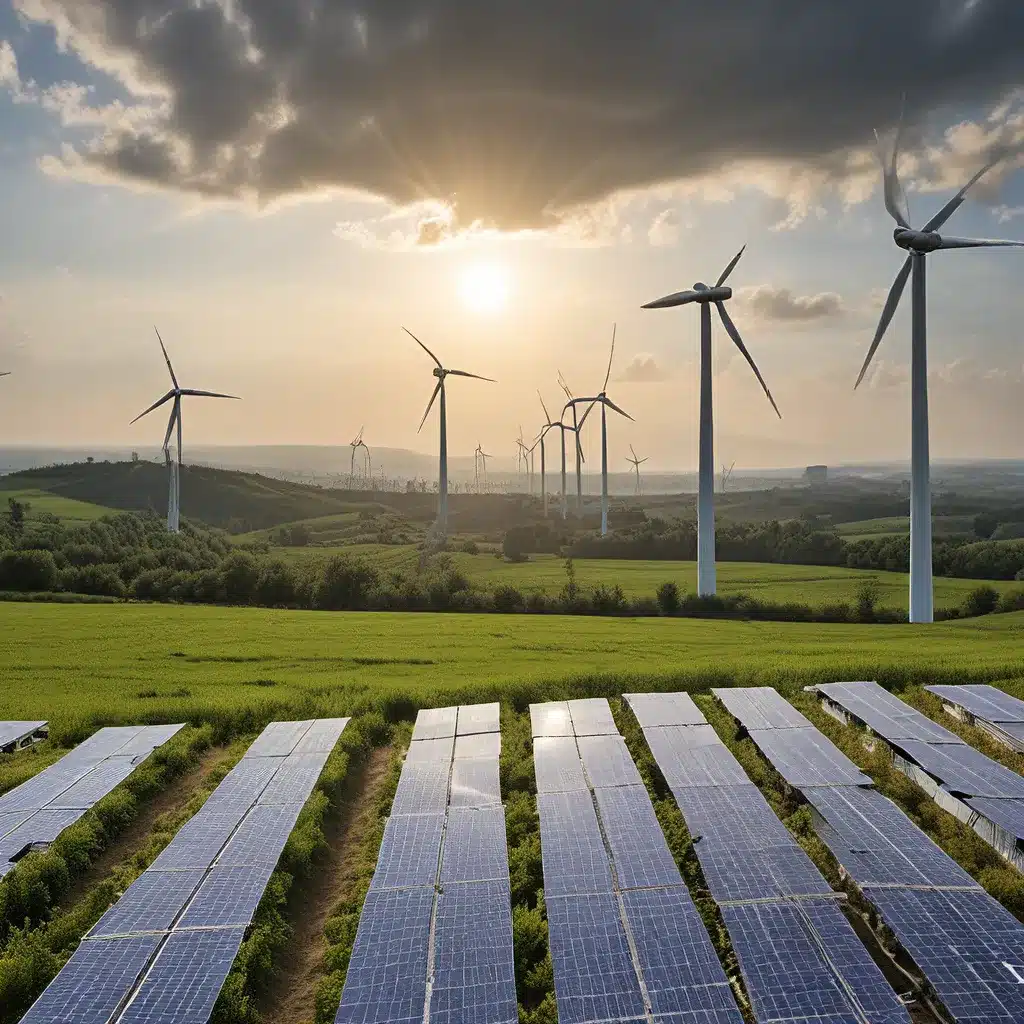
As I dive into the ever-evolving world of renewable energy regulations, I can’t help but feel a sense of both excitement and trepidation. On one hand, the rapid advancements in clean energy technologies and the growing global momentum towards sustainability are truly inspiring. But on the other, the complex web of policies, standards, and compliance requirements can be daunting, even for someone like me who’s been closely following this space.
Let me start by acknowledging the remarkable progress the European Union has made in recent years. According to the latest data, the EU has managed to reduce its net greenhouse gas emissions, including international aviation, by a 31% compared to 1990 levels – all while continuing to foster economic growth. This is no small feat, and it’s a testament to the EU’s unwavering commitment to tackling climate change.
The European Green Deal: A Roadmap to Climate Neutrality
At the heart of the EU’s efforts is the European Green Deal, which sets the overarching roadmap for achieving climate neutrality by 2050. This landmark initiative not only establishes legally binding climate goals, but it also outlines a comprehensive plan to transform every aspect of our economy and society – from energy and transportation to agriculture and urban planning.
One of the key pillars of the Green Deal is the Fit for 55 proposal, which aims to align the EU’s existing legislation with its more ambitious 2030 emissions reduction target of at least 55% below 1990 levels. This means that every sector, from power generation to manufacturing, will need to undergo a fundamental shift in how they operate, with a renewed focus on sustainable practices and clean technologies.
Navigating the Evolving Regulatory Landscape
As exciting as these targets may be, the reality is that implementing them will require a massive, coordinated effort across the EU member states. Each country has its own unique set of policies, incentives, and regulatory frameworks, all of which must be harmonized and streamlined to ensure a smooth transition.
Take the renewable energy sector, for example. While the EU has already achieved its target of 22.5% of energy consumption from renewable sources by 2022, the road ahead is far from straight-forward. Different member states have varying approaches to promoting renewable energy, from feed-in tariffs and tax credits to renewable portfolio standards and net metering schemes.
Navigating this complex landscape can be a daunting task, especially for businesses and individuals looking to invest in renewable energy solutions. That’s where organizations like Firewinder come into play, providing expert guidance and tailored solutions to help their clients stay ahead of the curve.
The Importance of Emissions Reporting and Monitoring
Another critical aspect of the EU’s climate action plan is the robust reporting and monitoring system it has put in place. The European Environment Agency (EEA) plays a key role in this process, collecting and providing access to a wide range of data related to greenhouse gas emissions, renewable energy, and energy efficiency.
This data is not only used to track the EU’s progress towards its climate targets, but it also informs the development of new policies and regulations. By having a clear, transparent view of the emissions landscape, policymakers can make more informed decisions and ensure that the measures they implement are truly effective.
The Challenges Ahead: Accelerating the Transition
While the EU’s achievements in emissions reduction and renewable energy adoption are certainly impressive, the report from the EEA cautions that accelerated action is urgently needed to meet the bloc’s ambitious climate and energy targets. This is particularly true in sectors like agriculture and transport, which have struggled to reduce their emissions over the past three decades.
One of the key challenges facing the EU is the ongoing gas and energy security crisis, which has highlighted the importance of transitioning away from fossil fuels and towards a more clean and secure energy system. This crisis has put a renewed focus on the need for diversification of energy sources, as well as the acceleration of investments in renewable energy infrastructure.
Embracing the Role of Nature-Based Solutions
Interestingly, the source information also emphasizes the crucial role that natural carbon sinks, such as forests, oceans, and soil, play in the overall climate change mitigation strategy. The Copernicus Land Monitoring Service, for example, provides detailed information on vegetation and land cover, which can help governments and policymakers better understand and manage these important carbon-absorbing assets.
As we continue to explore ways to reduce our emissions, it’s clear that we need to take a holistic, multi-faceted approach. This means not only transitioning to cleaner energy sources, but also restoring and protecting natural ecosystems that can help us capture and store carbon.
Collaboration and Cooperation: A Global Imperative
Ultimately, the fight against climate change is a global effort, and the EU’s actions are just one piece of the puzzle. The United Nations Framework Convention on Climate Change (UNFCCC) and the Paris Agreement provide the framework for international cooperation, ensuring that countries around the world are working together to tackle this pressing issue.
As I reflect on the information I’ve gathered, I can’t help but feel both encouraged and humbled by the magnitude of the challenge we face. The path to a sustainable, low-carbon future is complex and multi-layered, requiring a coordinated effort from governments, businesses, and individuals alike.
But I also believe that with the right mindset, the right technologies, and the right policies in place, we can overcome the obstacles and build a cleaner, more resilient world for generations to come. It’s a tall order, to be sure, but one that I’m confident we can achieve if we work together, adapt to the changing landscape, and remain steadfast in our commitment to a sustainable future.

